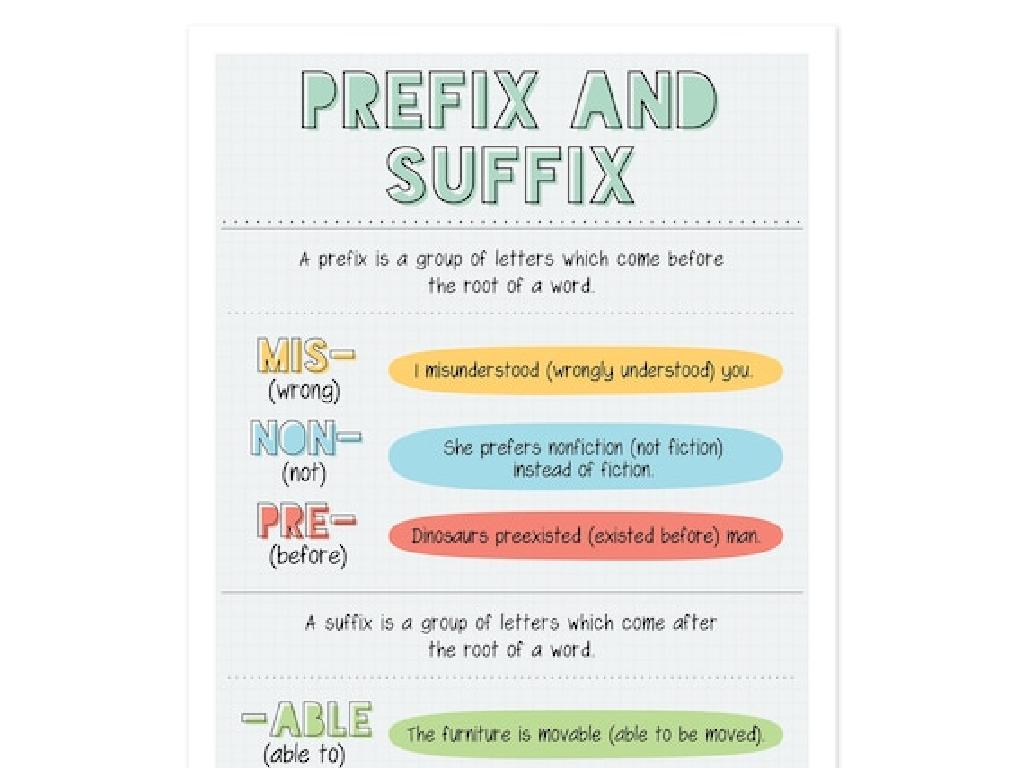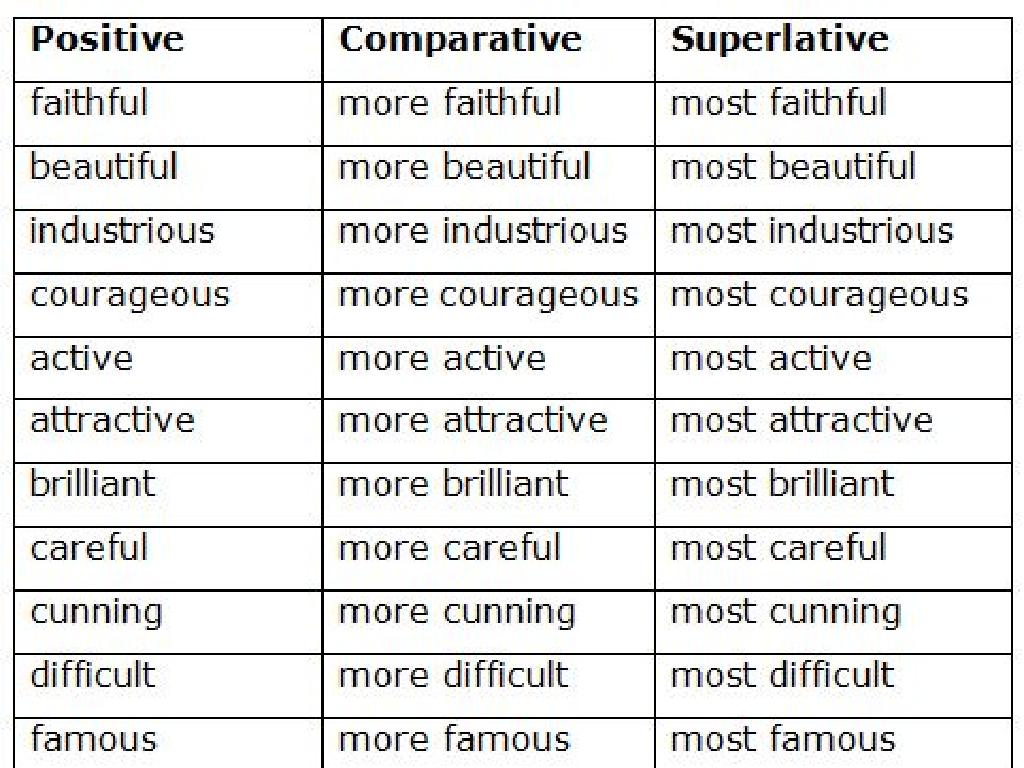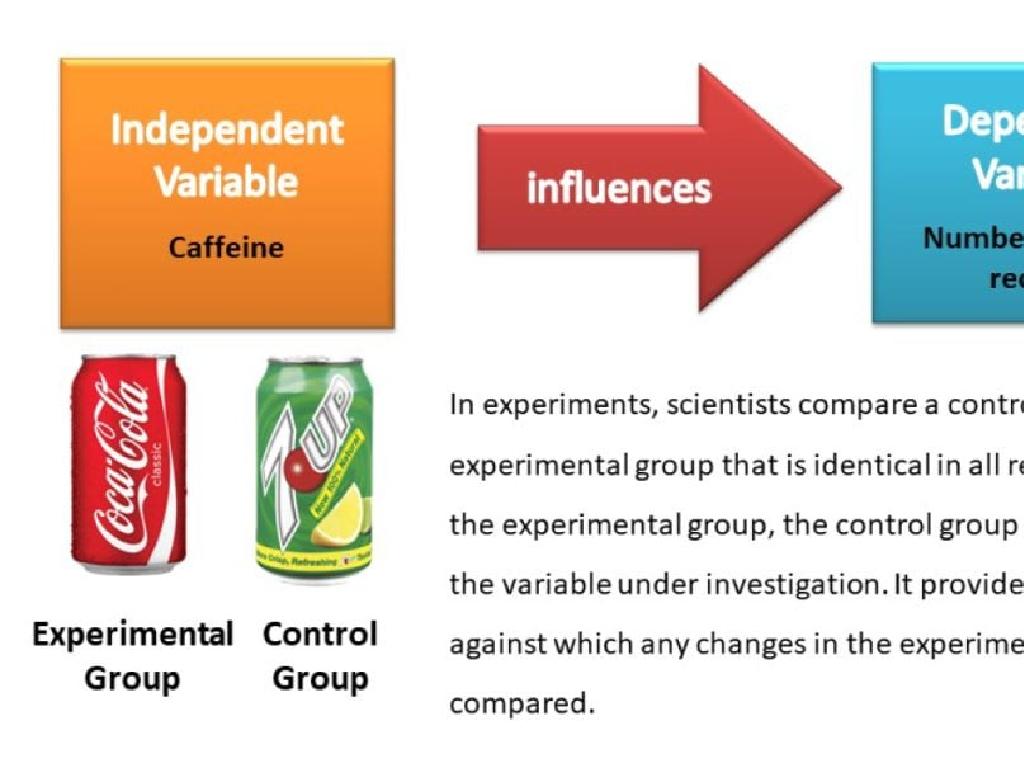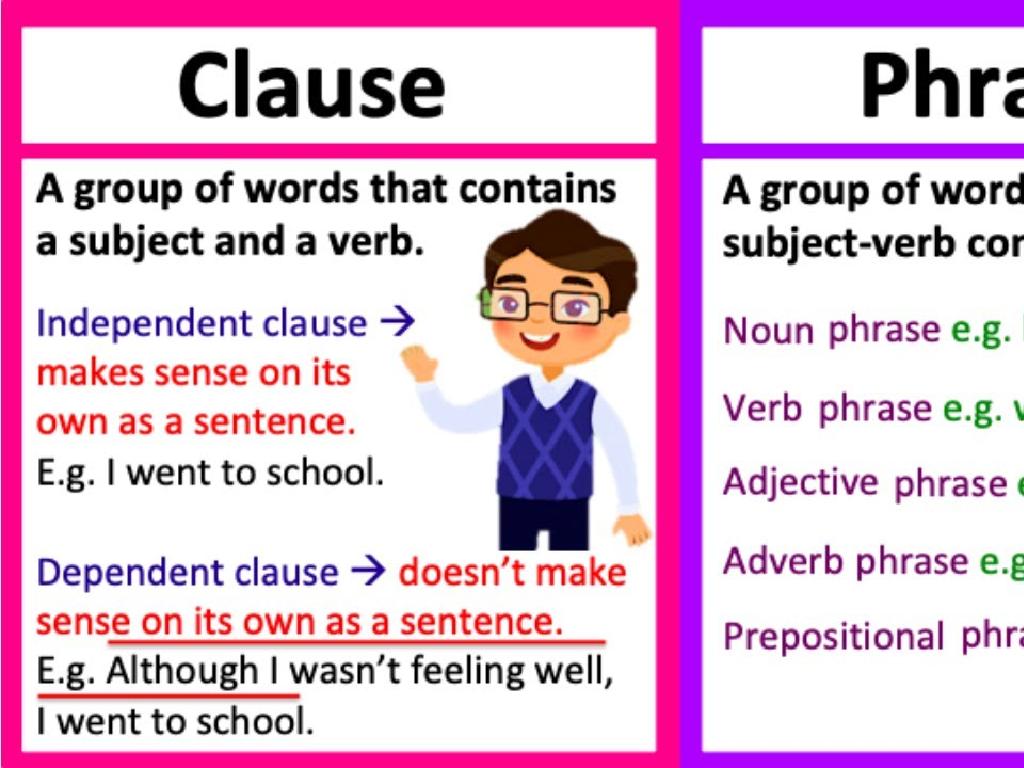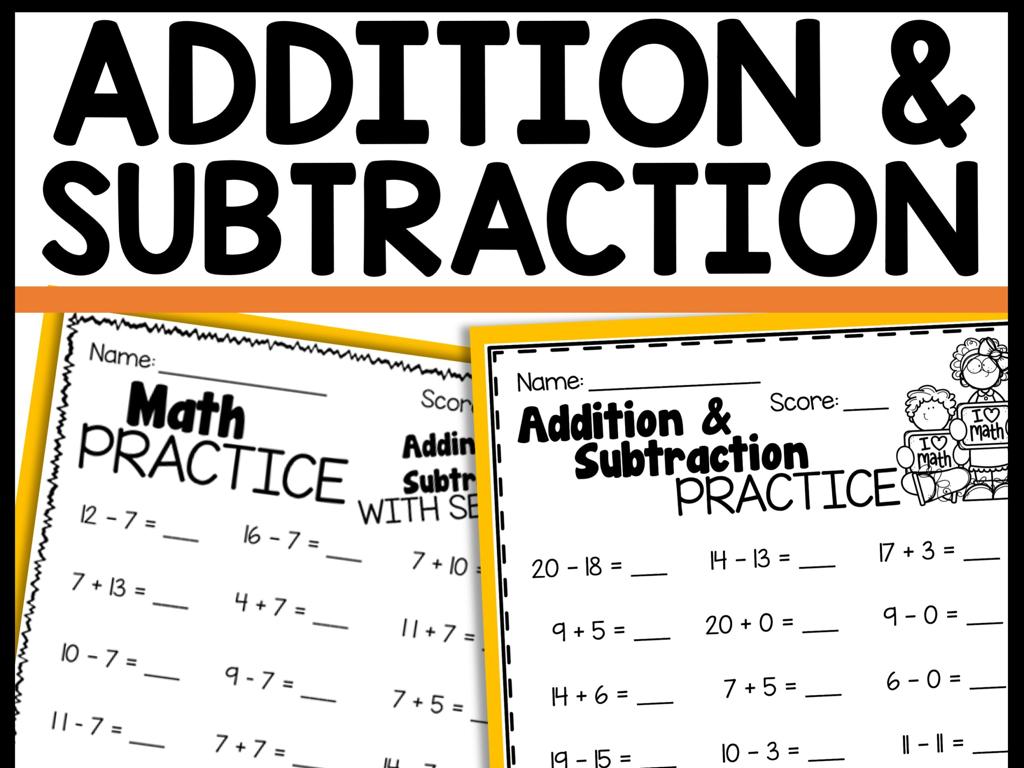Add One-Digit Numbers - Sums To 10
Subject: Math
Grade: Second grade
Topic: Addition: One Digit
Please LOG IN to download the presentation. Access is available to registered users only.
View More Content
Welcome to Addition!
– Becoming addition experts today
– Learn to add numbers up to 10
– We’ll add numbers like 2 + 3 or 4 + 5
– Counting and adding can be fun
– Use fingers or objects to help count
– Practice with examples and games
– We’ll use blocks, drawings, and activities
|
This slide is designed to introduce second-grade students to the concept of addition with sums up to 10. The goal is to create an engaging and interactive learning experience. Start by explaining what it means to be an ‘addition expert’ and motivate the students with the idea that they can become one. Demonstrate simple addition problems using visual aids like fingers or objects. Incorporate interactive activities such as using blocks or drawing pictures to represent addition problems. Encourage participation and make the learning process enjoyable with games that reinforce the concept. The slide sets the stage for a hands-on and fun-filled math lesson.
Understanding Addition: Sums to 10
– What is addition?
– Putting two or more numbers together
– Adding makes numbers bigger
– The total grows as we add more
– Like combining toy collections
– Imagine your toys in one big pile
– Practice with numbers 1 to 10
– We’ll add numbers up to 10 together
|
This slide introduces the concept of addition to second graders by relating it to a familiar activity: gathering toys. Start by explaining that addition is the process of combining two or more numbers to make a new, larger number. Emphasize that when we add, the total amount increases, just like when they collect more toys, their toy pile gets bigger. Use visual aids or actual toys to demonstrate this concept if possible. Then, guide the students through several examples of adding numbers within the range of 1 to 10, ensuring they understand that the sum does not exceed 10. Encourage them to use their fingers or counters to help them visualize the addition process.
Adding with Fingers
– Use fingers for small sums
– Example: Add 2 + 3 using fingers
– Hold up 2 fingers, then add 3 more
– Show 5 fingers for 2 + 3
– After adding, you should see 5 fingers total
|
This slide introduces the concept of using fingers to visually and physically represent addition, which is a practical method for second graders to understand basic arithmetic. Start by explaining that each finger represents one unit. Demonstrate adding 2 + 3 by holding up two fingers on one hand and then three on the other, combining them to show five fingers in total. Encourage the students to follow along with their own hands. This kinesthetic approach helps solidify the concept of addition as combining quantities. After the demonstration, ask the students to practice with different combinations that add up to 10 or less, ensuring they understand the concept before moving on to more abstract methods.
Number Line Addition
– Understanding number line
– A line with numbers in order, like a ruler
– ‘Jump’ to add numbers
– Start at one number, move ahead to add
– Practice with class activity
– We’ll use a number line on the board together
– Sums up to 10
– Add numbers that total 10 or less
|
This slide introduces the concept of using a number line for addition, which is a visual tool that helps second graders understand how numbers are combined to make new sums. Explain that a number line is like a ruler that shows numbers in sequence. Demonstrate how to ‘jump’ from one number to another to represent addition. Engage the class with a hands-on activity using a number line drawn on the board. Have students come up and perform addition problems with sums up to 10. This will help them visualize the addition process and reinforce their understanding of basic arithmetic. Prepare different scenarios where students add numbers up to 10, ensuring they grasp the concept of incremental addition.
Adding with Objects: Let’s Count Together!
– Count objects to add
– Example: Adding apples
– If you have 3 apples and get 2 more, let’s count to see the total.
– Start with 3, add 2 more
– Let’s count: 1, 2, 3… and then 4, 5
– Counting on our fingers can help us add numbers up to 10.
|
This slide is designed to introduce students to the concept of addition by using tangible objects, such as blocks or toys, to make the process interactive and understandable. Start by explaining that addition is simply the process of putting things together to find out how many there are in total. Use the example of apples to demonstrate this concept: if you start with 3 apples and someone gives you 2 more, you can count all the apples to find out how many you have now. Encourage the students to count aloud together. This activity helps to solidify the concept of addition and shows how it applies to real-world situations. It also prepares them for more abstract addition without the need for physical objects. For the class activity, have various sets of objects ready for the students to practice adding together, ensuring they all sum up to 10 or less to match the lesson’s objective.
Addition Word Problems: Story Time Math
– Stories can help us learn to add
– I’ll tell a story with numbers
– For example, ‘5 birds sat on the fence, and 2 more joined. How many now?’
– Listen to find numbers to add
– Pay attention to the details that involve numbers
– We’ll solve the story problem together
|
This slide introduces the concept of using addition word problems as a tool for teaching students to add one-digit numbers with sums up to 10. The objective is to make math fun and relatable by framing it within a story. As you tell the story, emphasize the parts that involve numbers and addition. Encourage the students to listen carefully and identify the numbers that need to be added. After the story, work through the problem together, reinforcing the concept of addition. This interactive approach helps students understand the practical application of math in everyday situations. For the activity, consider using props or visual aids to make the story more engaging. Ask students to come up with their own stories and share them with the class for added practice.
Let’s Practice Adding!
– Try some addition problems
– Count carefully each time
– Use fingers or objects to help
– For example, to add 2 + 3, hold up 2 fingers, then add 3 more fingers.
– Practice with a number line
– Draw a line with numbers 0 to 10, start at first number and take steps to add the second.
|
This slide is designed to engage second-grade students in hands-on addition practice. Encourage them to solve addition problems by counting carefully. Students can use their fingers, which provides a tactile method for counting, or objects like blocks or counters to visualize the addition process. Introduce the number line as another strategy for adding numbers, which can help students understand the concept of progression in addition. During the activity, circulate the room to assist students who may struggle and to ensure they are using the strategies effectively. Offer a variety of addition problems that sum up to 10 to cater to different skill levels within the class.
Class Activity: Addition Bingo
– Let’s play Addition Bingo!
– Listen for the addition problem
– Find the sum on your Bingo card
– If I say ‘4+3’, look for ‘7’ on your card
– Get five in a row to win!
|
This interactive game is designed to help second graders practice addition with sums up to 10 in a fun and engaging way. Before starting, ensure each student has a Bingo card with numbers 0-10. Explain the rules clearly, emphasizing that they need to listen carefully to each addition problem you call out. Encourage them to use their fingers or counters if they need help adding. As students find the correct sums on their cards, they should mark them. Celebrate the winners and encourage a supportive atmosphere. Possible variations of the game could include playing for different patterns on the Bingo card, such as ‘four corners’ or ‘full house’. This activity reinforces mental addition skills and number recognition.

